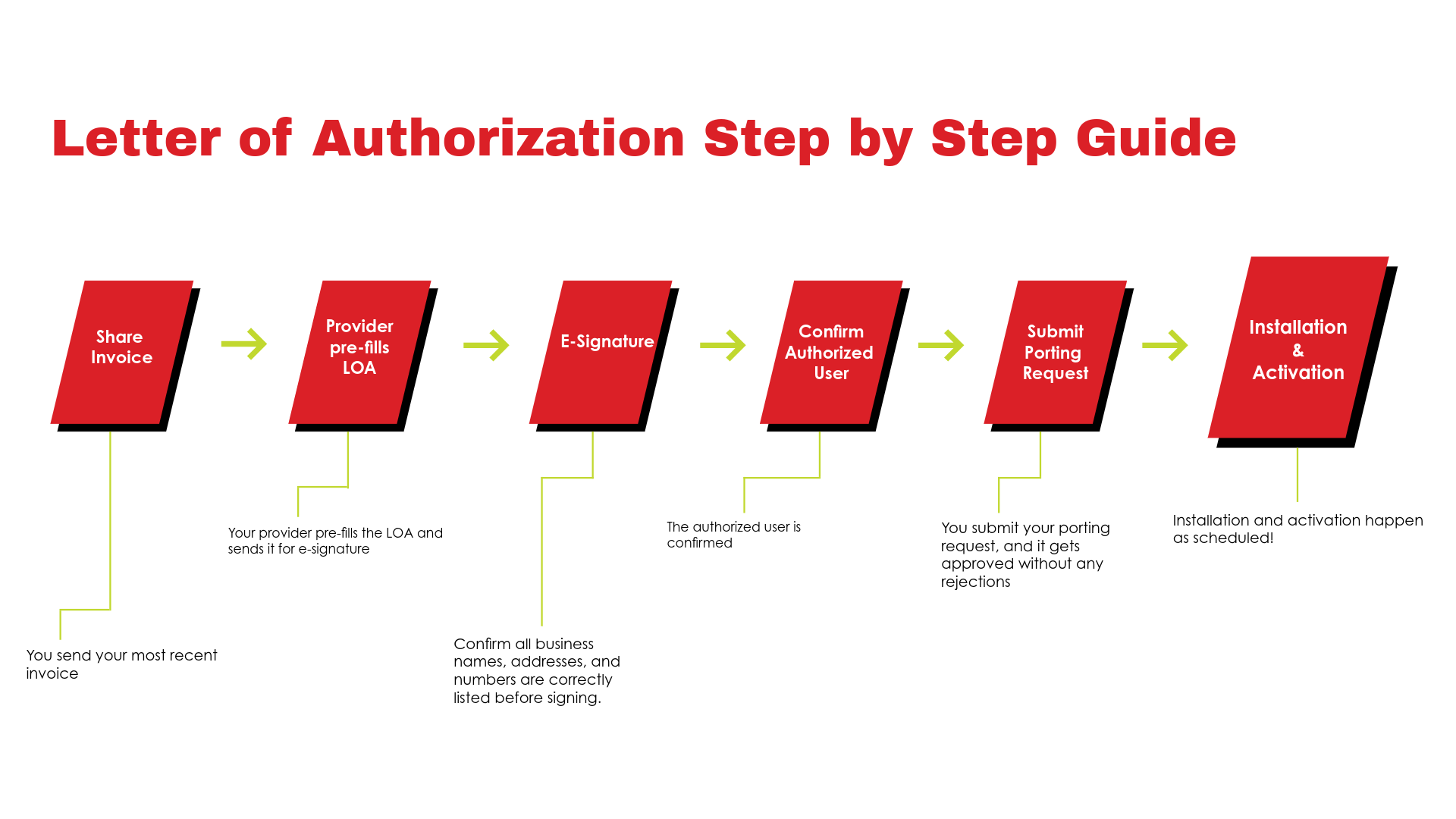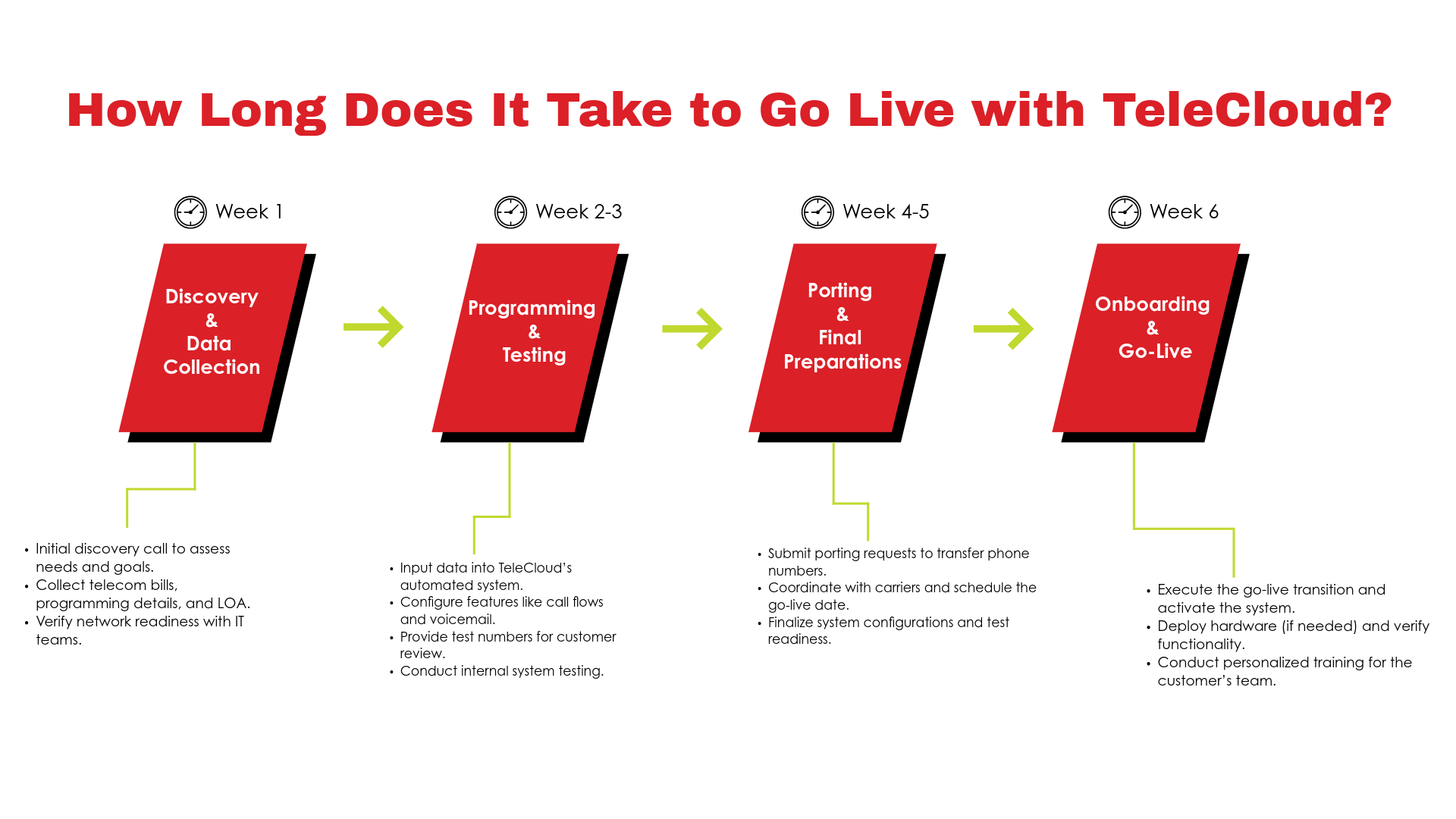When Should You Upgrade Telecom Providers: 6 Key Business Triggers
April 2nd, 2025
5 min read

Switching telecom providers isn’t something most business owners think about—until a problem forces them to. Maybe your service has been unreliable, costs have been increasing, or your business has outgrown your current provider’s capabilities. But how do you know when it’s the right time to switch?
The reality is that there are key business events that make reevaluating your telecom services a necessity rather than a choice. Whether you're relocating offices, merging with another company, or facing unexpected outages, these moments create the perfect opportunity to ensure your business has the right technology and support in place.
At TeleCloud, we’ve worked with companies of all sizes, guiding them through provider transitions with minimal disruption. Whether that means moving forward with a provider like us—or simply knowing what questions to ask your current provider—you should have all the information necessary to make the right decision, even if that decision is to stay where you are (as long as your provider still meets your evolving business needs).
This guide will walk you through six major business events that may require a telecom provider switch, how to assess if it’s the right move, and what to look for in a new provider. Now, let’s dive into the six business events that make switching necessary.
1. You’re Moving to a New Office
Moving to a new office is one of the most obvious times to rethink your telecom setup. When you're settling into a new space, it’s often easier to install new technology, infrastructure, and systems rather than relocating outdated equipment.
Why Relocating Impacts Your Telecom Setup
- New offices often require new wiring, new networking equipment, and updated systems.
- Moving old, outdated equipment can be costly and impractical, especially if your business is still using legacy on-premise phone systems. It may be cheaper to switch to a more modern solution.
- Setting up a modern system from day one ensures everything is optimized before your team steps into the new space.
Should You Move Your Current System?
- If you already have a cloud-based system that works well, you may be able to keep it with minimal adjustments.
- If your system is older or hardware-based, this is the best time to upgrade to a more flexible VoIP solution.
- If your current provider doesn’t offer service at your new location, it makes it an easy decision.
A move allows your team to start fresh with a system optimized for your new space, reducing future disruptions and tech limitations.
2. Your Company Is Merging or Being Acquired
Mergers and acquisitions often lead to telecom consolidation, choosing one provider to unify operations.
How Mergers & Acquisitions Impact Telecom
- In a merger (where two companies combine as equals), leadership must choose a single provider that best fits the new business structure.
- In an acquisition (where a larger company acquires a smaller one), the larger company typically dictates the provider and standardizes services.
What to Consider When Consolidating Providers
- Evaluate which provider offers the best reliability, scalability, and support.
- If one provider has better integrations with your CRM, IT, or security systems, that may be the deciding factor.
- Standardizing on one system reduces costs and simplifies training for employees adjusting to new operations.
During a merger or acquisition, choosing the right telecom provider ensures smoother communication and fewer technical headaches.
3. Your Business Is Growing or Downsizing Significantly
A major increase or decrease in staff (typically 20% or more) is a clear sign to reassess your telecom system. Major staff changes present an opportunity to reassess what telecom features your business truly needs.
Why Business Size Changes Matter
- Growing teams need scalable telecom solutions—legacy systems may struggle to support additional employees.
- Downsizing businesses risk overpaying for unused services or features, and some providers may not be willing to adjust pricing accordingly.
- Adding new employees to outdated systems can be costly and inefficient. Whereas cloud-based phone systems are typically much more scalable.
Key Considerations When Scaling Up or Down
- If your business is growing, consider whether your current provider can support additional users without costly upgrades.
- If your workforce is shrinking, check whether your provider is flexible on pricing or if switching would offer a better deal.
If your telecom system no longer aligns with the size of your company, switching providers could help you optimize costs and efficiency.
4. Your Contract is Ending
If your telecom contract is ending in the next 3–12 months, whether your existing VoIP provider, phone line carrier provider, or phone equipment (lease with a third-party bank) agreement, this is the perfect time to reevaluate your services.
Why You Shouldn’t Auto-Renew Without Reviewing Options
- If you're happy with your provider, negotiate better rates or updated service terms before signing a new agreement.
- If you’ve been frustrated by service quality, pricing, or lack of support, use this as an opportunity to explore alternatives.
How to Evaluate Whether to Stay or Switch
- Compare pricing, features, and service levels with other providers.
- Consider whether your current provider has kept up with your business needs or if a competitor offers better technology.
- Look at renewal contract terms carefully—some providers lock you into long-term deals with little flexibility.
Pro Tip: Many businesses only evaluate new providers when their contract ends; by this time, it is too late, and you will likely force yourself to auto-renew. So, make sure to stay on top of it and begin evaluating long before your expiration date.
5. You’ve Experienced a Major Outage
If your telecom system has gone down for days, it’s a major warning sign.
Why an Outage Is a Red Flag
- It costs you money— A recent study found that outages cost businesses an average of $9,000 per minute.
- It harms customer trust and damages your reputation.
- If your provider lacks failover or redundancy options, your business is at greater risk of future service disruptions.
What to Look for in a More Reliable Provider
- 99.99% uptime guarantees and multiple redundant data centers.
- Failover solutions to prevent future outages.
- A history of fast response times and strong customer support.
Your telecom provider should be a dependable business asset, not a weak link that causes costly disruptions.
6. Your Current System Is No Longer Supported
If your telecom provider announces they’re discontinuing service or no longer supporting your system, you must act quickly.
Why an Unsupported System Is a Critical Risk
- Legacy systems from brands like Mitel or Toshiba are being phased out, leaving businesses with no updates, no support, and no security patches.
- An outage on an unsupported system could mean weeks of downtime if no service technicians exist to fix it. In other words, you are screwed…
Sticking with an unsupported system puts your business at risk—the sooner you switch, the better.
Still Wondering If It’s Time to Switch? These Are the Red Flags
Now that you’ve seen the key business events that often demand a telecom upgrade, it’s worth taking a step back to assess your current provider. Even if none of those events are happening yet, persistent issues could still be holding your business back.
Here are some common signs that it might be time to consider a change:
- Frequent outages – Even occasional downtime can disrupt operations and damage your credibility.
- Slow or unhelpful customer support – If getting issues resolved feels like a chore, that’s a problem.
- Limited scalability – Your provider should grow with your business, not hold it back.
- Unpredictable billing or hidden fees – Rising costs and confusing contracts can eat into your budget.
- Outdated technology – If your system doesn’t integrate with the tools your team actually uses, you’re falling behind.
If any of these issues sound familiar, you don’t have to wait for a major business shift to start exploring your options. A better, more reliable telecom partner could already be within reach.
How to Find the Right Telecom Provider For Your Business
If your business is facing any of these six trigger events, now is the time to evaluate your telecom provider.
Steps to Take When Switching Providers
- Assess your needs – What features does your business require?
- Research providers – Compare pricing, service reliability, and customer reviews.
- Get multiple quotes – Speak with at least two to three providers.
- Look for flexibility – Find a provider that can scale with your business growth.
- Plan your transition – Ensure a seamless switch without downtime.
What If You Want to Stay with Your Current Provider?
If you determine your current provider is still the right fit, use this opportunity to reassess your service plan. Whether you need to scale up, scale down, or add new features, have a clear conversation about aligning your services with your current business needs. A good provider will work with you to make those adjustments.
Is It Time for Your Business to make a change??
Switching telecom providers isn’t just about finding a better deal—it’s about ensuring your business has the right technology to support its success.
If you’re experiencing one of these six major business changes, it’s time to take a hard look at whether your current provider is truly meeting your needs.
Don’t wait for an outage or contract renewal to force your hand. Schedule a free telecom assessment with TeleCloud today and discover how a better provider can keep your business connected and future-ready.
vin@telecloud.net OR call/text 908-378-1218
Topics:























